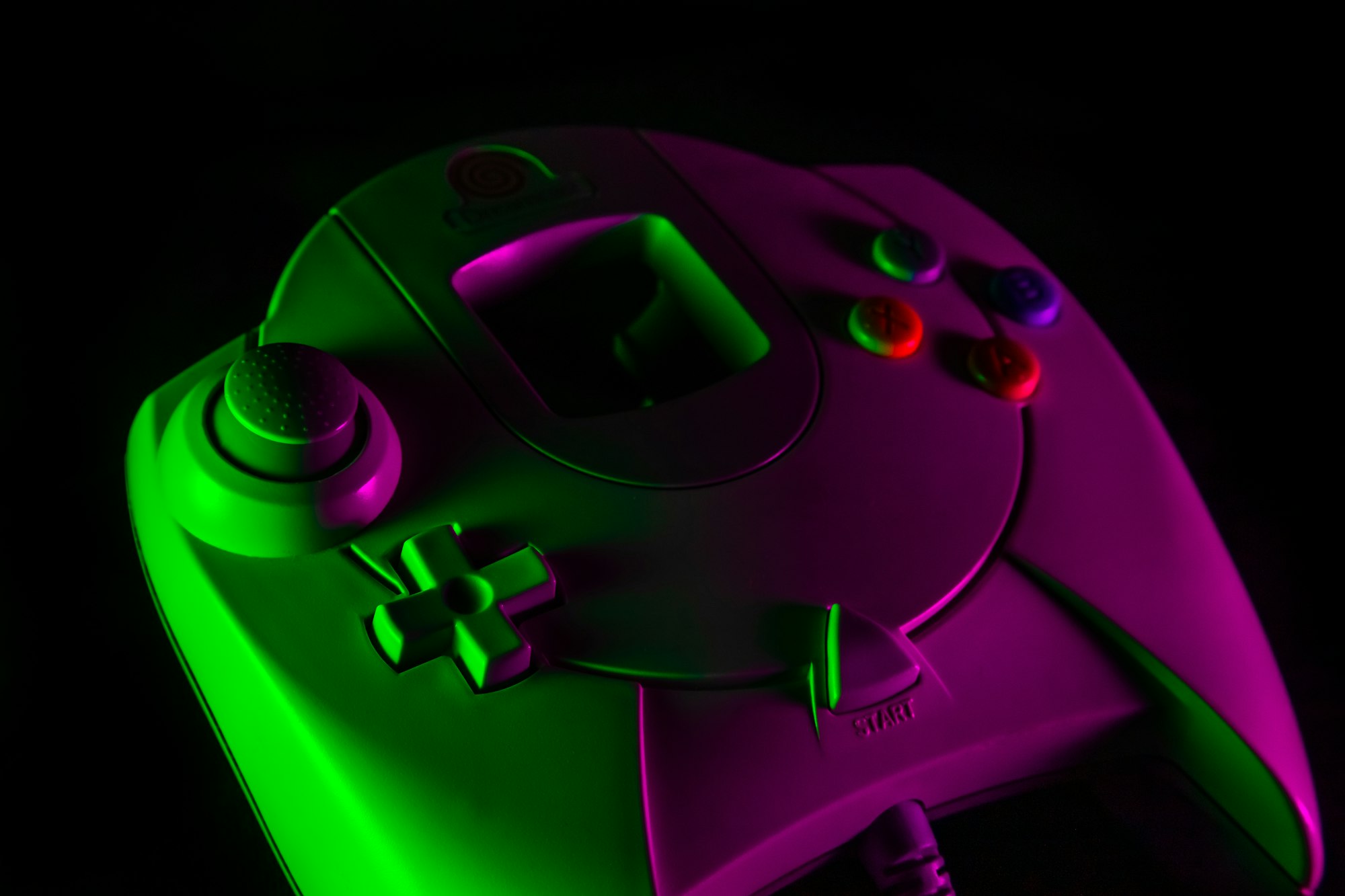An Appeal Through the Nostalgia Glasses
On preservation, graphics, and old games

Time is baffling, and frustrating. I find myself geared increasingly towards a curmudgeonly mentality in many aspects of my life, aged as I am at the archaic birthday of 32. It’s not that I’m shaking my weathered fist at passing clouds and moaning about whatever the kids are doing on TikTok, but I do spend a fair amount of time bemoaning the state of my most beloved medium, video games.
The Problem of Age
It’s difficult to suddenly realize that one of your favorite video games has become “old.” You fondly remember standing in GameStop as if it were yesterday, handing over hard-earned money in exchange for that gilded, fresh pre-order. You went home, started up your PlayStation 2, and experienced Metal Gear Solid 3 or Final Fantasy XII. The games had great reviews. They were revered and celebrated and hailed as pillars of the industry and examples of exquisite game design.
Then, suddenly, those games are fifteen years old, and you have no idea how the time passed so quickly.
Gaming, and especially trends in gaming, can be dangerous. There are few of us that don’t want that shiny new system, even if it only comes with a single game and costs over $500. We want to experience the cutting edge graphics, the new bells and whistles. We want to be surrounded by 3D audio and look at water that well…looks like water. I get it. What comes with every new generation (and this trend is old as dirt) is the sudden maligning of previous generations, the call that older games no longer “look good,” that newer is always better. Despite Metal Gear Solid 3 or Final Fantasy XII being graphical pinnacles at their release, fifteen years later the way they’re viewed is suddenly different. We have a graphical problem in gaming, but it doesn’t have anything to do with the graphics themselves.

Aesthetics vs Graphics vs Perception
There is a hardcore difference between graphical fidelity and artistic aesthetic. Despite so many people over the years struggling in vain to convince the overall populace that yes, in fact, video games are art (I’m one of them), the “video games as art” conversation often falls silent because it is hamstrung by the actual audience that engages in and purchases video games. We repeat this unfortunate trend of throwing the baby out with the bathwater, of deciding that any game that doesn’t have all the newest titanic improvements (in this case, 120 frames-per-second, a buttload of polygons and is playing on a 4k or 8k television) is suddenly ugly.
As if the art direction behind the games don’t matter. As if, instead of viewing the age of games by their time period and appreciating them for what they are, we are in a constant comparison game between the new and the old.
These aren’t nostalgia glasses talking — we need to stop doing this, or the entire medium is going to suffer further.
I can’t argue that Chrono Trigger looks better than the newest Call of Duty by graphics alone — it doesn’t. In terms of art style, game design, aesthetics however? This is a legitimate and structured conversation that more gamers need to be having with one another, and this is the only way that the games as art conversation is going to have any sort of impact on the greedy CEOs that decide what games get published, remastered, or lost forever to time. We are currently suffering through a crisis of identity when it comes to games, and that is never as apparent as when your new console can no longer access games that are older than a single generation. If you’re in your thirties or older, you’ve seen more than five generations of games, and if you somehow lost access to those consoles or had to sell your games, tough.
They’re gone.
Preserving History
Gamers seek to curate their own history, more often than not because the companies that made your favorite games (sadly) do not care one iota about the preservation of their games. Oh, the new The Legend of Zelda sold millions of copies? Great! That alone is looked at as the sales of an individual title — it does not give Nintendo any incentive to re-release Ocarina of Time for the Nintendo Switch. Despite the fact that so many Final Fantasy titles are available on the console, the pre-VII classics are disturbingly absent, and often not celebrated by the company or their social media posts in the same way the more “modern” graphically enhanced versions are. Final Fantasy Tactics is not only one of the most celebrated games of the series but was one of the two entries that premiered in the Smithsonian as a representative, and it is bafflingly not available on any modern consoles either through re-release or remaster.
Any perusal through social media will show you that gaming’s appreciation goes far beyond whatever the most recent release is. Gamers love to talk about old games, and not through a fond “do you remember when” anecdotal sense, but through a “I just played this very real game on my very real PlayStation 2 last week” sense. It can be expensive for companies to leave their servers live and allow gamers to buy games that are ten, fifteen, twenty years old, but maybe this finally needs to be accepted as a sacrifice for the historical curation of the medium — or, maybe, we need to figure out a better way to make virtual consoles and re-releases viable that go beyond a complete obliteration every couple of console cycles. Games that are placed on virtual storefronts should last beyond single generations; they should be a consistent library that you can pull from regardless of what console you buy.

Erasing the Past
Recently, a fervor was generated because of a shocking rumor: Sony might be ending their virtual stores for the PSP, Vita, and PlayStation 3 this year. While not immediately understood by some, the gravity of this possible announcement sent shockwaves through Twitter. Fans, including myself, have been hoarding our physical copies for a while now — this year alone I’ve added three new PlayStation 2 games to my collection (The Thing, and Digital Devil Saga 1 and 2), and I made sure to buy the disc version of the PlayStation 5 for a reason.
After this rumor floated Twitter for a few hours, the responses were shocking but not surprising — friends and followers posting screenshot after screenshot in a mad dash to obtain digital copies of games they did not yet have in their library. Despite the consoles being older now, the PSP, Vita, and PlayStation 3 are still beloved, and those consoles have access to a wide berth of classic games, from Silent Hill to Breath of Fire IV to Final Fantasy Tactics. Losing access to this digital library would be a substantial blow to not only the industry, but the fans. It’s possible that Sony may be gearing up to release a virtual console on PlayStation 5, but here lies the problem: the lack of communication and respect over “older” titles in game libraries is substantial and severe. What will it take to make the modern games we love suddenly be referred to as “old?” The PlayStation 5 is new right now, but games on the PlayStation 4 are already being treated as “classics.” Aging a game used to be in terms of fifteen years, even twenty…now any game that is past the five year mark is considered an “old game.” It’s confusing, and worrying.
Tears in the Rain
If you cannot look past graphical fidelity when choosing which game to play, I don’t know how to hold a conversation with you. It shouldn’t be difficult for anyone to play The Legend of Zelda: A Link to the Past and the new God of War in the same afternoon. You should be able to appreciate the artistic standards of Shadow of the Colossus and Final Fantasy XVI without getting into an argument about graphics or age. When it comes to preserving games and enjoying these eclectic libraries as art, we need more than just curation, emulation, and accessibility — we need to fundamentality change the language in our conversations and how different generations appreciate the graphical and aesthetic designs of games over time.
New is not the best. Old is not unplayable. What makes video games so remarkable is how many of them can eschew graphical standards and become remarkable experiences in their own right. Possibly the best way to bridge your standards between new and classic games is to play a healthy and steady stream of indie titles. Indie games, whether they’re new or old, often rely on classic graphical aesthetics in their design. The more recent Anodyne 2 was a remarkable, enjoyable, cerebral experience that despite its modern release purposefully looks like a mixture between a SNES and a PlayStation game. Games like Hades, while bearing every mark of modern quality of life additions, are designed to imitate our yesteryear. Broaden your horizons, venture into a game you’ve never played before, and enjoy each experience for what it is and how it was designed at the time. Every game you are enjoying in the modern era is standing upon the shoulders of giants.
The original Resident Evil, the GameCube remake, the Nintendo DS release and every other version of that incredible game should be allowed to exist at the same time, discussed, and celebrated. The way that we can show appreciation for gaming and its rich culture is not by erasing older games in favor of new ones, by opening up the possibilities for more people to play and enjoy the games they want to play and enjoy. There are things to appreciate about Pong and there are things to appreciate about Control. Video games deserve more than to be thought of as fun time sinks, they deserve an active and open celebration of their complex and myriad designs. Whether it’s an older RPG or a newer battle royale, whether it’s Final Fantasy II or Final Fantasy XV, we need to move the conversation away from the constant argument over modernity, and simply make the entire history of games available to one and all.
Regardless of how we want video games to be appreciated and played, they simply can’t be enjoyed unless people have access to them. With every generation lost, with every game that becomes locked behind an $80 “used” price tag on a dusty system, it becomes more difficult to have a conversation that spans beyond what was released last month.
Whether it’s investing in older games and systems, buying digital copies from a virtual storefront, or relying on emulation, I sincerely hope there is a way for you to continue playing the games you want to play, and I sincerely hope that you continue to play games for what they are and how they make you feel, and not only because they happen to live on the newest system.
